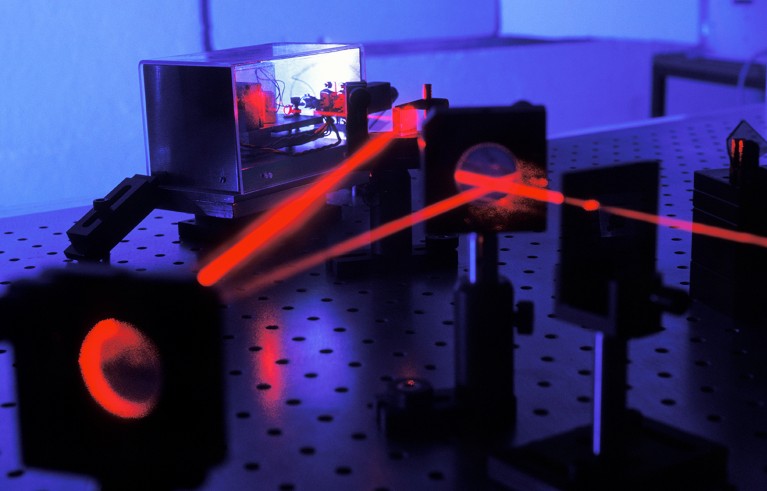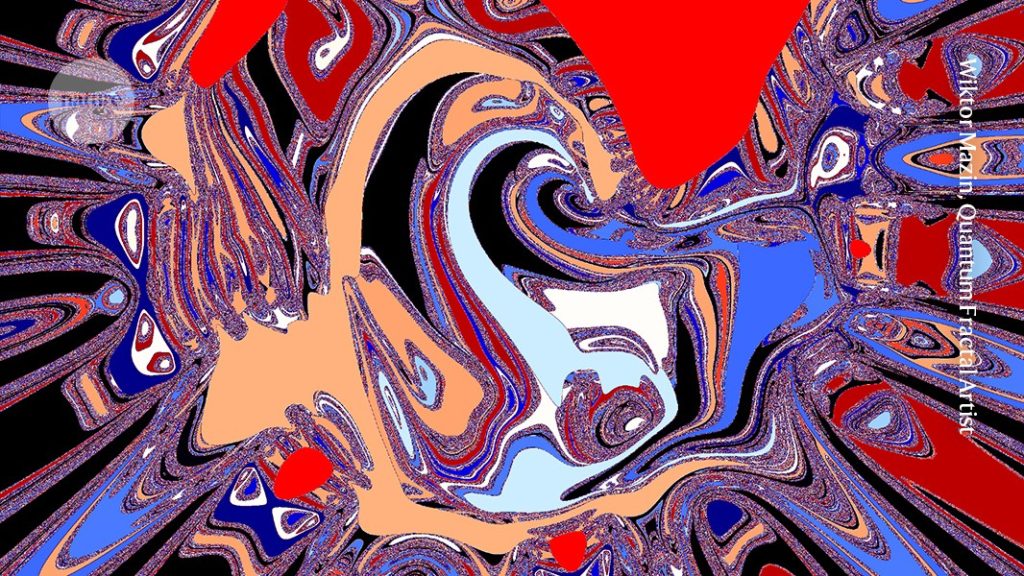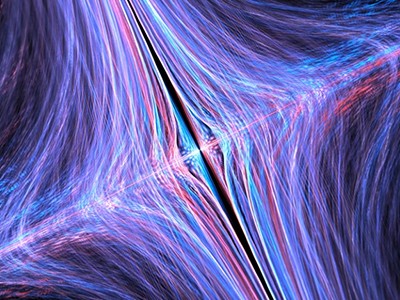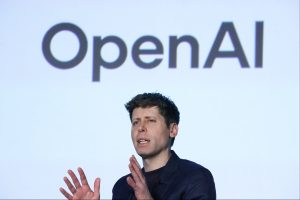Everyone has their favourite example of a trick that reliably gets a certain job done, even if they don’t really understand why. Back in the day, it might have been slapping the top of your television set when the picture went fuzzy. Today, it might be turning your computer off and on again.
Quantum mechanics — the most successful and important theory in modern physics — is like that. It works wonderfully, explaining things from lasers and chemistry to the Higgs boson and the stability of matter. But physicists don’t know why. Or at least, if some of us think we know why, most others don’t agree.
How quantum mechanics emerged in a few revolutionary months 100 years ago
The singular feature of quantum theory is that the way we describe physical systems is distinct from what we see when we observe them. The textbook rules of quantum mechanics therefore need to invoke special processes to describe ‘measurement’ or ‘observation’, unlike every previous framework for physics. As a field, physics does not have any consensus on why that is the case, or what it even means.
The first hints of quantum behaviour in nature came in works by physicists Max Planck in 1900 and Albert Einstein in 1905. They showed that certain properties of light could best be explained by imagining that it came in discrete, particle-like chunks, rather than as the smooth waves that classical electromagnetism depicts. But their ideas fell short of describing a complete theory. It was the German physicist Werner Heisenberg who, in 1925, first put forward a comprehensive version of quantum mechanics. Later that year, Max Born and Pascual Jordan followed up on that with Heisenberg, and Erwin Schrödinger soon produced an independent formulation of the theory1.
So it is fair to celebrate 2025 as the true centenary of quantum theory. Although such a commemoration can rightly point to a wide variety of breathtaking experimental successes, it must leave room to acknowledge the foundational questions that remain unanswered. Quantum mechanics is a beautiful castle, and it would be nice to be reassured that it is not built on sand.
Break from the past
Ever since Isaac Newton formulated classical mechanics in the seventeenth century, theories of physics have followed a definite pattern. You have a system under consideration: perhaps a planet orbiting a star, or an electric field or a box of gas. At any one moment in time, the system is described by its ‘state’, which includes both the system’s current configuration and its rate of change; for a featureless single particle, this amounts to its position and velocity (or, equivalently, momentum). Then, you have equations of motion, which tell us how the system will evolve, given its present state. This basic recipe worked for everything from Newtonian gravity right up to Einstein’s theories of relativity, which, like quantum theory, are a product of the early twentieth century. But with the advent of quantum mechanics, the recipe suddenly failed.
The failure of the classical paradigm can be traced to a single, provocative concept: measurement. The importance of the idea and practice of measurement has been acknowledged by working scientists as long as there have been working scientists. But in pre-quantum theories, the basic concept was taken for granted. Whatever physically real quantities a theory postulated were assumed to have some specific values in any particular situation. If you wanted to, you could go and measure them. If you were a sloppy experimentalist, you might have significant measurement errors, or disturb the system while measuring it, but these weren’t ineluctable features of physics itself. By trying harder, you could measure things as delicately and precisely as you wished, at least as far as the laws of physics were concerned.

Laser experiments have probed the reality of quantum entanglement, a concept alien to intuitive conceptions of how physics should work.Credit: Pascal Goetgheluck/SPL
Quantum mechanics tells a very different story. Whereas in classical physics, a particle such as an electron has a real, objective position and momentum at any given moment, in quantum mechanics, those quantities don’t, in general, ‘exist’ in any objective way before that measurement. Position and momentum are things that can be observed, but they are not pre-existing facts. That is quite a distinction. The most vivid implication of this situation is Heisenberg’s uncertainty principle, introduced in 1927, which says that there is no state an electron can be in for which we can perfectly predict both its position and its momentum ahead of time2.
Instead, quantum theory describes the state of a system in terms of a wavefunction, a concept introduced3 by Schrödinger in 1926, together with his eponymous equation that describes how the system changes over time. For our single electron, the wavefunction is a number assigned to every position we might observe the electron to be in — a wave, in other words, that might be mostly localized near an atomic nucleus or spread widely throughout space.
Where things get tricky is in the relationship between the wavefunction and observable quantities, such as position and momentum, that we might want to measure. The answer was suggested4 by Born soon after Schrödinger’s original paper. According to Born’s interpretation, we can never precisely predict the outcome of a quantum measurement. Instead, we can determine the probability of getting any particular outcome for an electron’s position, say, by calculating the square of the wavefunction at that position. This recipe completely overturned the ideal of a deterministic, clockwork universe that had held sway since Newton’s time.
In retrospect, it is impressive how quickly some physicists were able to accept this shift. Some, not all. Luminaries such as Einstein and Schrödinger were unsatisfied with the new quantum consensus. It’s not that they didn’t understand it, but that they thought the new rules must be stepping stones to an even more comprehensive theory.
The appearance of indeterminism is often depicted as their major objection to quantum theory — “God doesn’t play dice with the Universe”, in Einstein’s memorable phrase. But the real worries ran deeper. Einstein in particular cared about locality, the idea that the world consists of things existing at specific locations in space-time, interacting directly with nearby things. He was also concerned about realism, the idea that the concepts in physics map onto truly existing features of the world, rather than being mere calculational conveniences.
‘Shut up and calculate’: how Einstein lost the battle to explain quantum reality
Einstein’s sharpest critique appeared in the famous EPR paper5 of 1935 — named after him and his co-authors Boris Podolsky and Nathan Rosen — with the title ‘can quantum-mechanical description of physical reality be considered complete?’. The authors answered this question in the negative, on the basis of a crucial quantum phenomenon they highlighted that became known as entanglement.
If we have a single particle, the wavefunction assigns a number to every possible position it might have. According to Born’s rule, the probability of observing that position is the square of the number. But if we have two particles, we don’t have two wavefunctions; quantum mechanics gives a single number to every possible simultaneous configuration of the two-particle system. As we consider larger and larger systems, they continue to be described by a single wavefunction, all the way up to the wavefunction of the entire Universe.
As a result, the probability of observing one particle to be somewhere can depend on where we observe another particle to be, and this remains true no matter how far apart they are. The EPR analysis shows that we could have one particle here on Earth and another on a planet light years away, and our prediction for what we would measure about the faraway particle could be ‘immediately’ affected by what we measure about the nearby particle.
The scare quotes serve to remind us that, according to the special theory of relativity, even the concept of ‘at the same time’ isn’t well defined for points far apart in space, as Einstein knew better than anyone. Entanglement seems to go against the precepts of special relativity by implying that information travels faster than light — how else can the distant particle ‘know’ that we have just performed a measurement?
We can’t actually use entanglement to communicate across great distances. Measuring our quantum particle here, we now know something about what will be observed far away, but anyone who is actually far away doesn’t have access to the knowledge we have, so no communication has occurred. But there is at least a certain tension between how quantum theory describes the world and how we think space-time works in Einsteinian relativity.
Reclaiming reality
Attempts to resolve this tension have proliferated, with no clear consensus in sight. Indeed, significant disagreement lingers around the most central question we can think of: is the quantum wavefunction supposed to represent reality, or is it just a tool we use to calculate the probability of experimental outcomes? This issue fundamentally divided Einstein and the Danish physicist Niels Bohr in famous debates they had over decades about the meaning of quantum mechanics. Einstein, like Schrödinger, was a thoroughgoing realist: he wanted his theories to describe something we might recognize as physical reality. Bohr, along with Heisenberg, was willing to forgo any talk about what was ‘really happening’, focusing instead on making predictions for what will happen when something is measured.
The bizarre logic of the many-worlds theory
The latter perspective gave rise to ‘epistemic’ interpretations of quantum theory. The views of Bohr and Heisenberg came to be known as the Copenhagen interpretation, which is very close to what physicists teach in textbooks today. Modern versions include QBism6, short for ‘quantum Bayesianism’, and relational quantum mechanics7. Both of these interpretations emphasize how quantum states shouldn’t be considered in their own right, but only relative to an observer, the process of measuring and the changing states of knowledge during that process.











